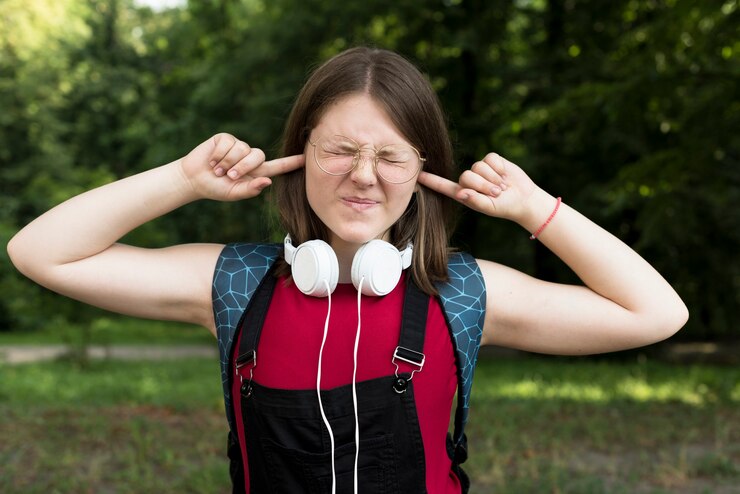Have you ever felt the rhythm of music move through “Exploring Pedacustic” your body, urging you to dance? Or perhaps you’ve experienced a moment where sound transforms into an almost tangible force that shapes movement and emotion. Welcome to the world of Pedacustic—a fascinating realm where sound and movement intertwine in captivating ways. This innovative approach not only enriches artistic expression but also opens up new avenues for creativity and connection. Whether you’re an artist, dancer, musician, or simply someone curious about this unique intersection of disciplines, there’s much to explore in the vibrant landscape of Pedacustic. Let’s dive deeper!
What is Pedacustic?
Pedacustic is a creative fusion of sound and movement that transcends traditional artistic boundaries. It involves using sound as a catalyst for physical expression, allowing performers to respond to auditory stimuli in real-time.
At its core, Pedacustic emphasizes the relationship between what we hear and how our bodies react. This can manifest in various forms, from dance improvisation driven by music to theatrical performances where soundscapes influence movement dynamics.
Artists engaging with Pedacustic often explore both structured compositions and spontaneous expressions. The interplay creates an immersive experience that captivates audiences.
This evolving art form invites practitioners to challenge their understanding of rhythm, melody, and gesture while fostering deeper connections between mind and body through shared sonic experiences.
The History and Evolution of Pedacustic

Pedacustic emerged from a blend of art and science, tracing its roots to early 20th-century experimental movements. Artists sought new ways to express ideas beyond traditional forms. This led to the exploration of sound as a physical experience, intertwined with movement.
In the late 1960s, pioneers like John Cage began exploring how sound could be manipulated in performance settings. Their work laid the groundwork for understanding how auditory cues enhance physical expression.
As technology advanced through the decades, Pedacustic evolved rapidly. The integration of digital tools allowed artists to experiment with real-time sound manipulation during performances.
By embracing interdisciplinary approaches, Pedacustic now features diverse influences—from dance and theater to multimedia installations—creating rich experiences that engage audiences on multiple sensory levels. Each evolution has expanded its reach and depth in contemporary artistic expressions.
The Benefits of Combining Sound and Movement
Combining sound and movement opens up a world of creativity. It allows artists to connect with their audience on multiple sensory levels. The rhythm of music can influence the flow of movement, creating an immersive experience.
This synergy fosters emotional expression. Dancers often find that sound enhances their ability to convey feelings through physicality. A powerful score amplifies every gesture, turning simple movements into storytelling vehicles.
Moreover, it encourages collaboration across disciplines. Musicians and dancers can work together to explore new forms of artistry. Each brings unique skills that elevate the overall performance.
In addition, this combination supports mental well-being. Engaging in both sound and movement promotes mindfulness and presence in the moment. Participants become more attuned to their bodies while enjoying the beat, enhancing relaxation and focus.
Blending these elements enriches any artistic practice by pushing boundaries further than either could alone.
Techniques in Pedacustic: Improvisation, Choreography, and Composition

Pedacustic thrives on the synergy between sound and movement, utilizing various techniques to create unique experiences. Improvisation plays a crucial role here. Artists respond spontaneously to their surroundings, allowing sounds to shape their movements in real-time.
Choreography introduces structure into this dynamic field. Dancers meticulously craft sequences that convey emotion through rhythm and motion. Every gesture becomes a note in an evolving symphony of expression.
Composition expands this further by integrating sound design with movement patterns. Composers can layer auditory elements while considering how each piece interacts with physicality on stage.
These techniques bind together, creating immersive performances that engage audiences on multiple sensory levels. Each element feeds off the others, resulting in an art form that is both personal and universal at once. The fluid relationship between these components invites endless exploration for artists committed to Pedacustic practices.
Case Studies: Successful Examples of Pedacustic Performances
One of the most striking examples of Pedacustic is during the annual “Sound and Movement Festival” in Berlin. Here, dancers collaborated with sound artists to create immersive performances that resonated throughout the venue. The fusion of their movements and live music invited audiences into a unique auditory experience.
Another noteworthy case is a project initiated by a local dance troupe in New York City. They partnered with musicians to produce spontaneous street performances. These pop-up events attracted passersby, transforming urban spaces into vibrant scenes filled with rhythm and motion.
In Asia, an experimental theater company has embraced Pedacustic by integrating traditional instruments into modern choreography. This blend honors cultural heritage while pushing artistic boundaries, showcasing how movement can amplify sound’s emotional impact.
These instances highlight how diverse interpretations of Pedacustic can captivate and engage communities worldwide.
How to Incorporate Pedacustic into Your Practice
Incorporating Pedacustic into your practice can be a transformative experience. Start by exploring the sounds around you. Use your environment as inspiration for movement.
Start small with improvisation. Allow sound to guide your movements. Let rhythm dictate pace and direction, creating an organic flow between audio and physical expression.
Consider setting specific intentions before each session. This could involve focusing on particular emotions or themes that resonate with you.
Experiment with different techniques—blend choreography with spontaneous actions. Record these sessions and analyze them later to discover patterns in how sound influences your movements.
Engage in group practices as well. Collaborating with others can enhance creativity, exposing you to new ideas and perspectives on combining sound and movement.
Don’t shy away from using technology! Incorporate apps or instruments that allow real-time audio manipulation while moving, adding another layer of depth to your exploration of Pedacustic.
Conclusion
Pedacustic is more than just a fusion of sound and movement. It’s an exploration of creativity that invites performers to engage deeply with their senses.
This innovative discipline opens doors to new artistic expressions. Artists can connect emotionally with audiences, creating immersive experiences that resonate on multiple levels.
For those looking to expand their practice, Pedacustic offers a unique avenue for personal growth. The techniques learned can enhance not only performance skills but also overall artistry.
Whether you are a seasoned performer or a curious beginner, the world of Pedacustic awaits your discovery. Embrace the rhythm and see where it leads you creatively.
FAQs
What is Pedacustic?
Pedacustic is a multidisciplinary art form that merges sound and movement. It explores how physical actions can produce auditory experiences, creating a rich tapestry of interaction between the two elements.
How did Pedacustic originate?
The roots of Pedacustic trace back to experiments in the late 20th century where artists began to combine music and dance. Over time, it evolved into its own distinct practice with various influences from theater, performance art, and modern dance.
Can anyone learn Pedacustic techniques?
Absolutely! While some background in music or dance may be helpful, anyone interested in exploring the relationship between sound and movement can start practicing. Workshops are often available for beginners.
What are some popular techniques used in Pedacustic?
Key techniques include improvisation, choreography tailored to specific sounds or musical scores, and composition that invites audience participation. Each approach offers unique opportunities for creativity.
Are there well-known performances showcasing Pedacustic?
Yes! Numerous performances have gained recognition for their innovative use of sound and movement. Notable examples include collaborations among dancers and musicians at festivals worldwide.
How can I incorporate Pedacustic into my routine?
Start by integrating simple movements while listening to different genres of music. Experiment with your body’s response to rhythm or melody. Join workshops or local groups focused on this form for guidance.
Where can I find more resources about Pedacustic?
Online platforms such as YouTube host many demonstrations by established practitioners. Additionally, several books focus on interdisciplinary arts that touch upon principles related to Pedacustic practices.
Whether you’re an artist seeking inspiration or simply curious about this fascinating blend of disciplines, there’s always something new to explore within the world of Pedacustic.

